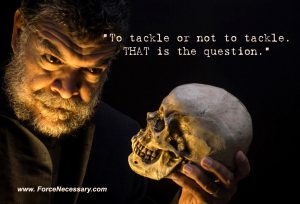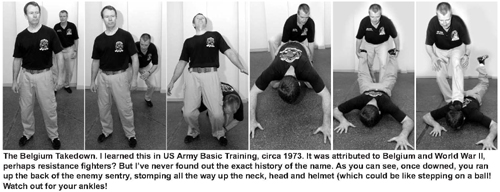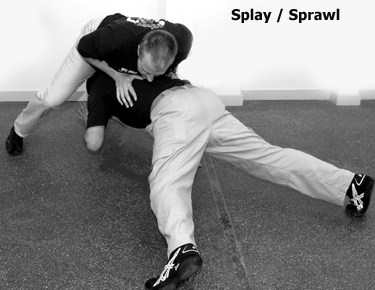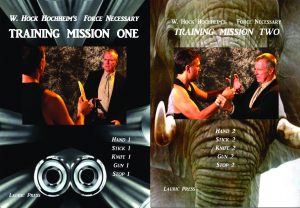The who, what, where, when, how, and why do you want to tackle a criminal, your “drunk uncle (relative) or an enemy soldier? If you tackle someone in the real un-matted, world, you will usually end up on the carpet, tile, floor, cement, asphalt, dirt, rocks, grass etc. of the indoor and outdoor, rural, suburban and urban theaters of life. Often times some may well be wearing enforcement uniforms and gear, or in regular clothes. Run through the “Ws and H” questions for your lifestyle, location and needs and predict where you might be tackling someone. This essay is NOT about the pros and cons of ground even though it must be mentioned once in a while. This essay is just about “tackling the tackle” or ” “tackle or not to tackle.” in terms of how to and how to survive.
- Who am I to tackle and who will I be tackling? Who is nearby to help the tackled? Help me?
- What happens if I tackle someone? What do I do? What will he do? What if he is bigger than me? What kind of tackle should I try? What are the counters to tackling? Will he pull a weapon? What is my mission anyway? Escape? Capture? Kill? What happens…next? What if he has a weapon?
- Where are we landing? Where is he carrying weapons to pull on my when we land?
- When is it appropriate and smart for me to tackle someone?
- How do I tackle exactly, anyway?
- Why am I tackling someone anyway? Why am I there? Why am I still there?
Being tackled is one of the four main ways we hit the ground in the fight, so says a number of universities with police science, criminology departments years back, gathering a smattering of stats as best they could for Caliber Press. Those big four ways, briefly, and in order (!) are these:
- 1. We trip and fall during the fight.
- 2. We are punched down during the fight.
- 3. We are tackled during the fight.
- 4. We are pulled down during the fight.
Even with only a smattering of research, the 4 mentioned seem very logical. In the Stop 5 of my Stop 6 program, it is nicknamed “Bear Hugs” is all about “bear hugs” and this arm-wrap, tackle subject. The single arm, and double arm “bear hugging” includes “hugging” the legs and is called “Tackle and Countering the Tackle.” We must learn the ways and moves of the opponent too, to counter those moves. Here are the main and common tackles we exercise through in the hand, stick, knife, gun courses as a foundation for you to springboard into deeper studies:
Common Sport-Based Tackles (which can, of course, work in “real life,” too) examples:
- Single leg right or rleft, a “leg pick,” or smothering crash on it. Often this is done with a deep knee bend, leg grab and push.
- Getting a palm-hand on the heel and pushing on the leg with a shoulder.
- Double leg grab and a push-pull, like the “Fire Pole” – a slip-down tackle from a bear hug or clinch, or a diving grab of the legs.
- Football-rugby tackles. As primitive as they can be, they are done in sports.
Non-Sport Tackles Examples:
- Wild-man, “untrained civilian” body grabs/tackles. (Usually waist high by the untrained.)
- Military body pitch where a tackler’s torso goes airborne.
- Law Enforcement Pursuit Tackles System where the pursuers are tackled from behind (like football-rugby) Not practiced enough, if ever! And certainly should be.
- knife, stick-baton, even rifle tackle takedowns.
Common Counters to Tackles
- Early phase: Pre-tackle – observing the set-ups.
- Early to mid-phase: Evasive footwork back and/or side-steps.
- Mid-phase: “Brick wall” (forearms on his upper body.)
- Mid-phase grabs like a side headlock, stomach choke. Catch, crank/choke.
- Mid-to late phase: The classic splay/sprawl.
- Late-phase: He pulls you down with him.
- Late-phase: Exhale in the early part of contacting the floor or ground, and try to “round off” body parts.
- Early-mid-to late phases: Can you hit, knee or kick anything?
Experiment with these foundational moves, then is you wish, continue on deeper.
Email Hock at: Hock@hockscqc.com
_________________
Get Training Mission One and Training Mission Two, second editions. Hundreds of pages with several thousand, how-to photos. Look for them, click here



